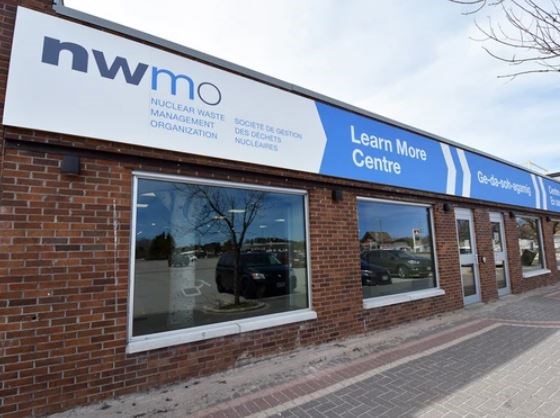THUNDER BAY - At a protest on Tuesday, Grassy Narrows Chief Rudy Turtle shared his strong opposition to the Nuclear Waste Management Organization’s (NWMO) proposed deep geological repository where Canada’s used nuclear fuel will potentially be stored.
In an interview with Dougall Media, Chief Turtle said the Land Defence Alliance has reached out to NWMO to speak with them about the project, but NWMO had a scheduling conflict which prevented them from attending a meeting.
“Well, the Land Defence Alliance just finished meeting these past couple of days and we had invited NWMO to come and sit with us but they didn't show up, and they had a change of schedule or something and we were looking forward to talking to them,” said Chief Turtle.
Turtle stated they would like to set up a future meeting, but there was no date set at this time.
Vince Ponka, regional communications manager with the NWMO, said the organization was aware of the protest, however they were attending the final day of the “willingness process” in Ignace.
Ponka said the NWMO did reach out to Grassy Narrows to schedule a meeting. According to Ponka, the chief and council asked to meet with NWMO’s chief executive officer, Laurie Swami, on April 25 to meet on April 30.
“Unfortunately, she just wasn't able to make that quick of a turnaround,” said Ponka.
Ignace Township and nearby Wabigoon Lake Ojibway Nation are two of four potential hosting communities for the DGR. The other two are the municipalities of South Bruce and Saugeen Ojibway Nation.
Once the “willingness process” is complete in all four host communities, NWMO will start the site selection process.
Ponka said NWMO will have a site selected by the end of the year.
In the meantime, Ponka said he would like to meet with the Land Defence Alliance at any point in the future.
"It's important for people to learn about this project and understand the realities of it and understand the safety requirements that come with any nuclear project. Even some of the basics to understand that used nuclear fuel is a stable solid. It's not a liquid, it's not something that can flow through rivers.
“So even those details are very important for people to have an understanding of why we are so confident that this project can be carried out safely and have no negative environmental impacts on the Northwest.”
The Land Defence Alliance is concerned about limiting the “willingness” vote to residents of Ignace and Wabigoon Lake Ojibway Nation. However, Ponka did say once the site selection process is finished, NWMO will branch out to the surrounding region to gather input on the next part of the process.
“I think as soon as we have a location, that's when we can start talking about transportation routes. Right now, since we don't have a site, we don't know where this may travel, what highways or even what railroads we may use to bring the used fuel to the potential site," Ponka said.
“So, once we do have that site, then we will expand our engagement into the wider region just to make sure that people do have a strong understanding of the project and are aware that it's not a liquid, aware of the 60-year safety record of transporting used nuclear fuel and that no one has ever been harmed in Canada or around the world by used nuclear fuel.”
During this part of the process, the proposed deep geological repository will be put in front of a 10-year regulatory approval process by the Canadian Nuclear Safety Commission. This regulatory process will include NWMO’s safety plan to transport used nuclear fuel to the site that is selected.
"Even though used nuclear fuel is classified as a dangerous good along with many other things on the road, it's much safer than a lot of the goods that are already transported on our highways across the Northwest," Ponka said.
Used nuclear fuel is shipped in a box that has 35-centimetre-thick steel walls and has been in severe road accidents in the past.
“Vehicles carrying used nuclear waste have been in serious accidents fully engulfed in flame, but those packages don't open. So that's what we'll need to prove to regulators is that even in the case of a severe road accident, that package will not open and there will not be a release of radiation into the environment.”
When asked if NWMO has a worst-case scenario plan in place if the package did open during a serious accident on the highway, Ponka said a worst-case scenario would be part of the transportation process and part of the 10-year regulatory approval needed to move the project ahead.
“There would need to be teams across the transportation route ready to respond to those sorts of incidents. And again, the benefit of dealing with uranium is because it's a solid. It's very easy to find. It's very easy to collect and put back into a container and be on our way with very little impact on the environment.
"Let’s say the highway, the radiation doesn't stay behind once you remove it, unlike say an oil spill or a gas spill where it's very, very difficult to get that material back again,” said Ponka.
